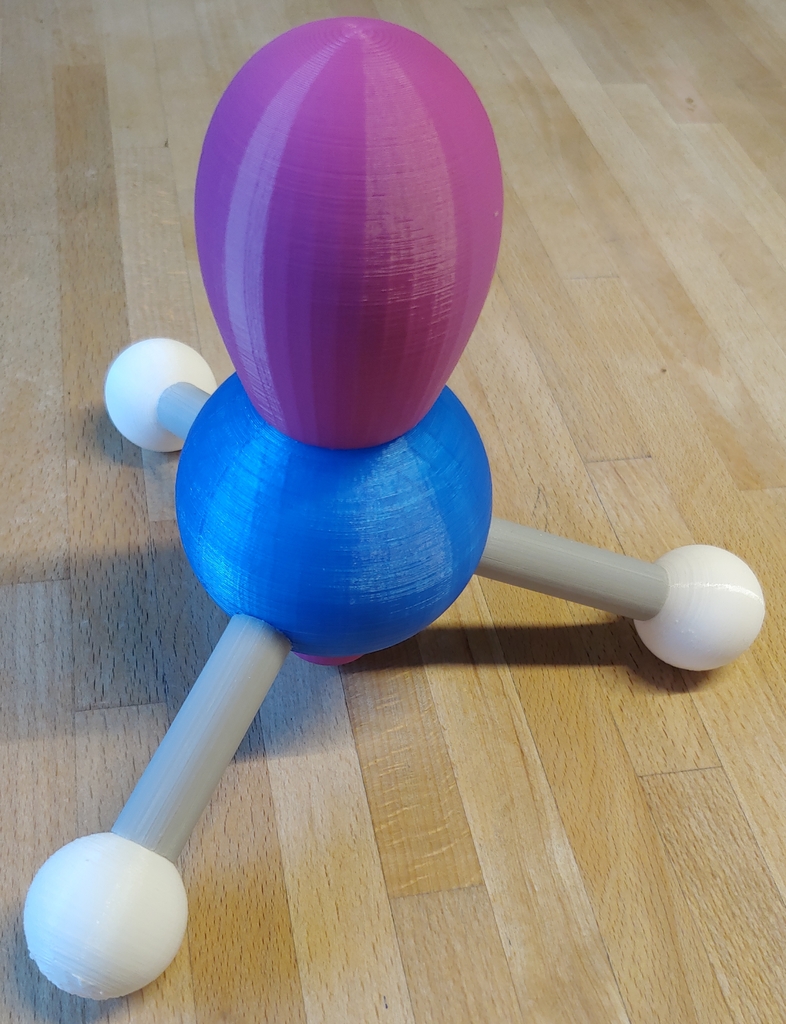
Ammonia molecule with lone pair of electrons
thingiverse
Human: Ammonia molecule with lone pair of electrons Following the rules of VSEPR theory, it is difficult to understand why the ammonia molecule has a trigonal pyramidal coordination geometry. In most representations, it looks like a molecule that has a central atom and three ligands; the lone pair is usually not shown. According to the VESPR theory, it should be trigonal planar. In this model the orbital of the lone pair is shown. This demonstrates that the arrangement of the four electron pairs on the nitrogen is almost tetrahedral. The lone electron pair has a stronger repulsive effect on the bonding electron pairs. Therefore the bond angle between the bonding electron pairs is only 107.3 °. In terms of its dimensions, this model fits a set of molecular models (methane: thing:4289684 , ammonia: thing:4289667 , water: thing:4256258), which are intended to support the explanation of the molecular structures with the help of the VSEPR theory. Due to their size, they are suitable for presentations. With the download two different models can be built: A "normal" model without lone pair and a model with lone pair. The bond angle and bond spacing are to scale. The covalent radii of the atoms have been halved for better visibility. However, the size ratio between nitrogen and hydrogen is correct. To build: For the "normal model": Print the "NHBond" file three times in gray and the "Hydrogen" file three times in white. "Nitrogen" is printed once in blue. The elements can then be glued together. Note that "NHBond" has a hydrogen end and an nitrogen end. This can be seen from the arching, which is flatter at the end of nitrogen. For the model with the free electron pairs: Print the "NHBond" file three times in gray and the "Hydrogen" file three times in white. " Nitrogen EP" is printed once in blue. In addition, you have to print "sp3Np" and "sp3Ns" each once in purple. The parts can then be glued together. Make sure that "NHBond" has a hydrogen end and an nitrogen end. This can be seen from the arching, which is flatter at the end of nitrogen. The lone electron pair should be glued to the nitrogen atom according to the photos.
With this file you will be able to print Ammonia molecule with lone pair of electrons with your 3D printer. Click on the button and save the file on your computer to work, edit or customize your design. You can also find more 3D designs for printers on Ammonia molecule with lone pair of electrons.
